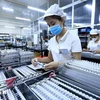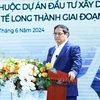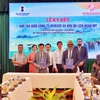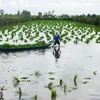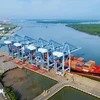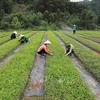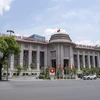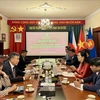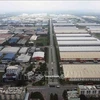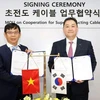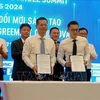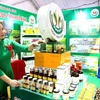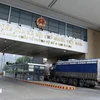Free Trade Agreements (FTAs) have increased in recent years, posing numerous opportunities and challenges for Vietnamese enterprises since tariffs are no longer a barrier. However, the liberalisation of services and investment is much harder to achieve.
After a decade of being a member of the World Trade Organisation (WTO) - a milestone that marks the first investment wave in Vietnam - the country is now negotiating a range of new free trade agreements (new generation FTAs), such as the Trans-Pacific Partnership (TPP) agreement and the Vietnam-European Free Trade Agreement (Vietnam-EU FTA), which are expected to bring the second wave of investments.
According to statistics published by the Vietnam Chamber of Commerce and Industry (VCCI), Vietnam is expected to remain at the forefront of this trend among the 12 countries joining TPP negotiations. The nation’s gross domestic product (GDP) is forecasted to increase by 23.5 billion USD by 2020 and export value is expected to increase to 68 billion USD by 2025.
However, VCCI Chairman Vu Tien Loc said the promising figures can only be achieved in an “ideal” situation - if Vietnam meets international standards and makes use of opportunities, particularly with big and important partners like the European Union and the US.
New generation FTAs create great opportunities for Vietnam to increase its price competitiveness compared to the WTO (members states only commit to reducing but not eliminating tariffs for “some” but not “most” tariffs). FTAs, therefore, include hugely beneficial preferential conditions, particularly tariff incentives.
On the other hand, tariff preferences also pose a number of challenges as tariff exemptions are applied only to export products that have a clear origin. In Vietnam, most raw materials have poor quality, which can hinder Vietnamese products from entering FTA markets.
Meanwhile, since FTAs are reciprocal agreements, Vietnam will no longer enjoy its “home ground” advantages. Local enterprises will have to keep prices low but provide high quality products and services to TPP member countries.
Furthermore, free trade is not based on utility, but on the legal framework. New laws and policies for production will have to be devised, especially for agricultural production.
When tariff barriers are removed, relative advantages and the distribution of labour between economies become clearer.
Vietnam enjoys a stable political and economic climate, and has abundant natural resources and manpower. Its strengths lie in apparel, footwear, electricity, consumer goods, and high-tech agriculture sectors, which are expected to create opportunities for capital investment and management cooperation.
In terms of the business climate and corresponding policies, the new generation FTAs could initiate a wave of institutional and administrative reforms, making Vietnam a more effective and market-oriented economy.-VNA
After a decade of being a member of the World Trade Organisation (WTO) - a milestone that marks the first investment wave in Vietnam - the country is now negotiating a range of new free trade agreements (new generation FTAs), such as the Trans-Pacific Partnership (TPP) agreement and the Vietnam-European Free Trade Agreement (Vietnam-EU FTA), which are expected to bring the second wave of investments.
According to statistics published by the Vietnam Chamber of Commerce and Industry (VCCI), Vietnam is expected to remain at the forefront of this trend among the 12 countries joining TPP negotiations. The nation’s gross domestic product (GDP) is forecasted to increase by 23.5 billion USD by 2020 and export value is expected to increase to 68 billion USD by 2025.
However, VCCI Chairman Vu Tien Loc said the promising figures can only be achieved in an “ideal” situation - if Vietnam meets international standards and makes use of opportunities, particularly with big and important partners like the European Union and the US.
New generation FTAs create great opportunities for Vietnam to increase its price competitiveness compared to the WTO (members states only commit to reducing but not eliminating tariffs for “some” but not “most” tariffs). FTAs, therefore, include hugely beneficial preferential conditions, particularly tariff incentives.
On the other hand, tariff preferences also pose a number of challenges as tariff exemptions are applied only to export products that have a clear origin. In Vietnam, most raw materials have poor quality, which can hinder Vietnamese products from entering FTA markets.
Meanwhile, since FTAs are reciprocal agreements, Vietnam will no longer enjoy its “home ground” advantages. Local enterprises will have to keep prices low but provide high quality products and services to TPP member countries.
Furthermore, free trade is not based on utility, but on the legal framework. New laws and policies for production will have to be devised, especially for agricultural production.
When tariff barriers are removed, relative advantages and the distribution of labour between economies become clearer.
Vietnam enjoys a stable political and economic climate, and has abundant natural resources and manpower. Its strengths lie in apparel, footwear, electricity, consumer goods, and high-tech agriculture sectors, which are expected to create opportunities for capital investment and management cooperation.
In terms of the business climate and corresponding policies, the new generation FTAs could initiate a wave of institutional and administrative reforms, making Vietnam a more effective and market-oriented economy.-VNA
